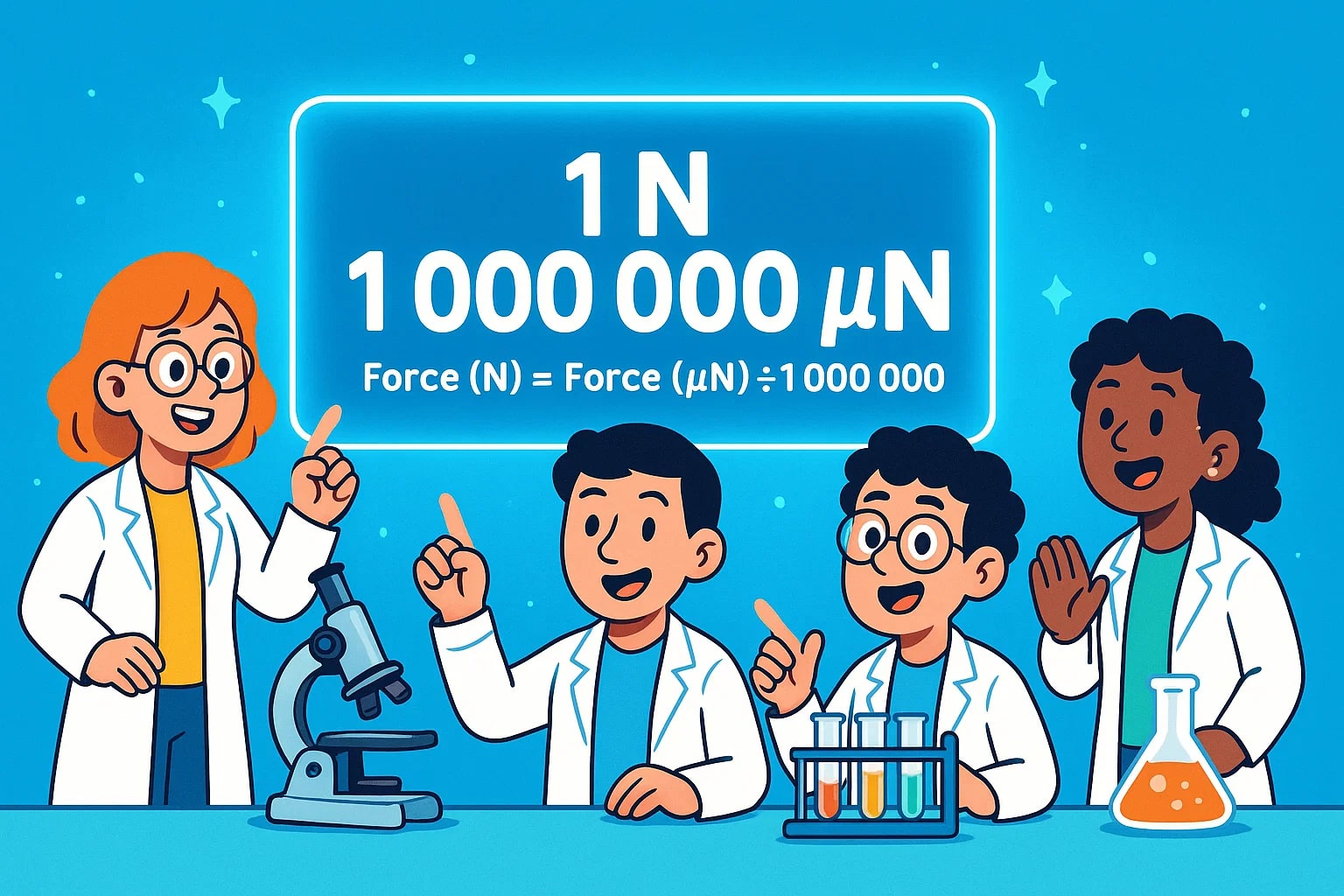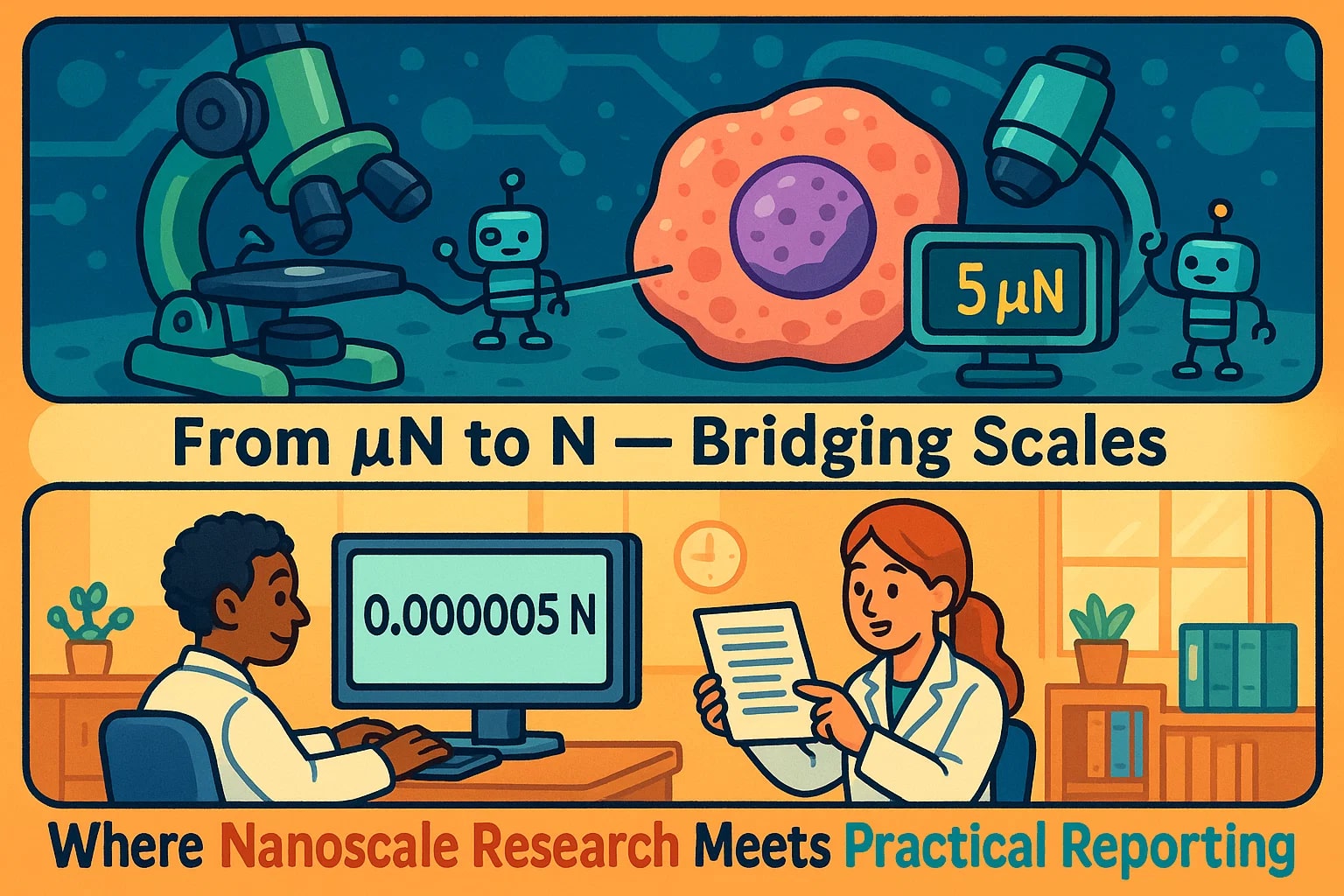Micronewton to Newton – How to convert μN to N
When forces are so small they’re nearly invisible, scientists and engineers turn to the micronewton. Converting those readings to newtons is simple, but the contexts where micronewtons appear — from nanotechnology to biological research — make this unit anything but ordinary. Here’s how the two units relate and why both matter.

The micronewton (μN): measuring the almost weightless
A micronewton is one-millionth of a newton, expressed as 1 μN = 0.000 001 N. The prefix “micro-” means 1/1 000 000, making the unit essential for studying incredibly small forces.
Micronewtons are common in fields like microelectronics, nanotechnology, and materials science. For instance, researchers studying the adhesion between a single cell and a surface often record forces in the 10–500 μN range. Using newtons directly would produce unwieldy decimals like 0.000 045 N.
The newton (N): the foundation for all force measurements
The newton is the SI unit of force, defined as the amount of force required to accelerate 1 kg by 1 m/s². It’s used universally — from everyday physics to aerospace engineering.
While newtons make sense for most work, when forces become microscopic, converting to micronewtons avoids decimals so small they’re difficult to read, let alone compare.
How to convert μN to N
The conversion is straightforward:
1 N = 1 000 000 μN
Force (N) = Force (μN) ÷ 1 000 000
Example calculation:
A sensor detects a pulling force of 125 000 μN. To express it in newtons:
125 000 μN ÷ 1 000 000 = 0.125 N.
Thus, 125 000 μN = 0.125 N.
For other unit options, visit Jetcalculator’s Force Converter or browse the full Conversion tools section.
Did you know?
-
One micronewton is roughly the weight force of 0.1 mg — lighter than a human hair clipping.
-
Atomic force microscopes measure interactions as tiny as a few μN, revealing how molecules interact at the nanoscale.
-
Many biological adhesion studies, such as testing how cells stick to scaffolds, use micronewtons as their standard force unit.
-
The average force of a dust particle settling on a surface can be measured in just a few μN, useful for space and cleanroom research.
-
Some ultra-sensitive thrust measurement systems for micropropulsion (like ion thrusters) record forces as low as 10–50 μN.
Where these units meet: nanoscale research and practical reporting
The micronewton and newton may differ by a factor of a million, but both help researchers describe forces with clarity. In advanced labs, μN-scale readings help scientists measure cell interactions, micro-springs, and even subtle gravitational effects on small objects.
Once those figures are integrated into broader reports or models, they’re converted to newtons to align with standard engineering and scientific conventions. This keeps data readable and comparable across projects of any scale.

Converting keeps results clean
Working with micronewtons can quickly lead to long strings of zeros if you stick to newtons, while staying in μN can make broader calculations awkward. Converting between them ensures that forces — whether they’re as faint as a particle settling or as large as a structural load — remain easy to interpret.
Use Jetcalculator’s Conversion tools or the dedicated Force Converter whenever your work spans both tiny and standard scales. Whether you’re analyzing a micro-sensor or assembling a complete system, switching between micronewton and newton keeps your figures precise and practical.

